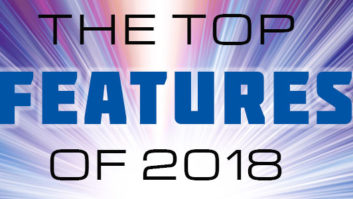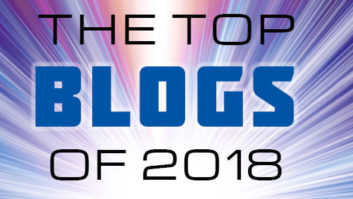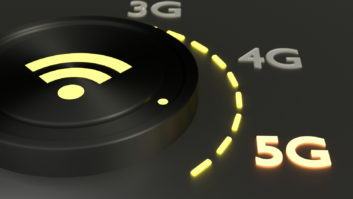As a prelude to the selling season, it is appropriate to describe what is becoming a red-hot product category on a number of fronts: optical disc products.
It’s all too easy to only consider “DVD,” but that is a bit too limiting. After all, it isn’t just DVD players anymore. Depending on your vendor line card, you may sell not just “movie players,” but DVD recorders in one of three main formats, high resolution audio players, and products that combine any of the above with hard drives. Add in to the mix some products that are strictly hard-drive-based and you quickly see how broad the market can become.
Before getting to the specifics, it is important to note that despite the availability of the latest “Special Edition” Terminator 2 DVD with a high-definition version on the disc, it is still likely to be at least two years before we see any BluRay products in the North American market. It is similarly unlikely that we’ll see any other blue laser product before that time.
Competing with blue laser-based products as a potential DVD carrier for high-def optical disc products are a variety of proposals that utilize advanced compression technology to squeeze enough data on to a disc using the current red-laser DVD technology so that an HD movie can fit on a single disc. Some proponents see this as competitive to blue laser, others see it as complementary. Regardless, given the extensive political wrangling going on at the same time as the scientists work to prefect everything, it is unlikely that we will see any of these other formats in place as a viable HDTV carrier any time soon.
Where does that leave you this year? First, you may rest easy that there will be no new format coming into play for a while that will make obsolete the products you have just sold and installed. Second, the parties to almost all of the formats have stated that backward compatibility is essential. That means that the discs (both DVD and CD) that your clients purchase today to play on the players you have sold them will also play on any future machines. Indeed, though the formats and disc technology may change, it seems probable that the same Dolby Digital and DTS audio formats in use today will carry forward to any of the HD formats. This is an added measure of forward compatibility, again eliminating any problems for clients who are obsolescence phobic. So if you won’t have HD-DVD players this year, what will you have? Particularly when any consumer can purchase a DVD player today, albeit one with quality that might not look good on a large-screen display, for less than the price of some DVD “Special Edition” disc sets, it is important to differentiate your offerings from the “big box” stores.
One way to do this is to look beyond mere progressive scan outputs to players with more advanced video processing and post-processing technologies. In some cases this will come through the use of a post-processing chip while in others it will come from the design of the player itself. Look for these features from all the major brands, and point them out to your clients.
Where the real separation from mass-market players will come, however, is in the inclusion of high-resolution audio playback. After two seasons with both DVD-Audio and SACD, it seems clear that at this point there will be no “winner” in this format battle, at least not this year. What to do? Look at the growing number of “universal” players that are available, so that you are not forcing your clients to choose between one format or the other.
Regardless of format, at this date we are still without an agreed-to-standard for all-digital communication between a DVD player with any flavor of high-resolution audio and the receiver or processor. Yes, some brands, most notably Meridian, Pioneer and Denon offer digital links between a source and the “sink” device, but while 1394 figures into both formats, the lack of an agreed to standard for the copy control/content protection is causing almost everyone else to sit on the sidelines with digital connectivity. Does a client require digital connection? You can offer it, but you need to explain that it will be necessary to stay with a one-brand solution at this time, and it is impossible to mix and match the player and processor. Oh well, maybe next year.
The issue of digital connectivity brings to mind one item unresolved from the discussion of player to display connectivity. At present, almost all DVD players still sport analog connections for video as well as audio. That is likely to begin changing gradually over the course of the year with DVI connections beginning to pop up as more players sport up conversion to 720P/1080I within the player. No, this isn’t “true HD” as proposed earlier, but it does enable the player to do the processing rather than take your chances with the scaling and conversion in a display. Samsung may the first main-line brand to offer this type of player, and others will be available from both high-end and higher volume brands.
Okay, so we’ve found ways to provide DVD movie playback, but what about recording? After all, isn’t the recordable DVD being touted as the replacement for VCRs? Perhaps, though time will tell if that honor is awarded to hard drive.
Okay maybe the real answer is a product with a hard drive and a DVD drive! For this season there will be a number of choices encompassing all of these formats and combinations. On the recordable side we still have three DVD re-writable formats: DVD-RAM, DVD-RW and DVD+RW, with the RAM and “-” camps offering their write-once “-R” variation while the “+” forces will have their “+R” write-once. All three formats are now in second or third generation models, with prices dropping to the point where you should definitely begin to consider adding a recordable to system bids for archiving material your clients have captured over the years on video tape, or to archive programs they are not storing on PVRs. As with the DVD-A/SACD format battle there is no clear winner, though there the choices for multi-format DVD recordables is still decidedly limited. Sony has taken the approach of creating a machine that is capable of dealing with the two main formats (“-” and “+”), Sony’s RDR-GX7, assuring that you should be able to create a disc that will play on most any DVD player in the market by using one format or the other.
Toshiba is taking a different approach with their D-R1, which will use a “Super MultiDrive” to accommodate DVD-RAM, DVD-RW and DVD-R. While this combination may mean that there is the potential for some occasional misses on the compatibility front, the availability of DVD-RAM recording means that your customers will be able to take advantage of the Time Slip functionality the other two recordable formats are unable to offer. Although there is no hard drive on board, DVD-RAM’s format allows for simultaneous record and playback so that the unit can deliver close to PVR functionality, including broadcast pause and live rewind while a program is being recorded. A 1394 input for connection to DV-based camcorders is also onboard, making this an interesting choice for clients who are camcorder fans.
Beyond these two units, the selection of a DVD-recording format is something you will have to balance against the needs of your client. Do they require more compatibility with discs from DVD-RAM based camcorders or is backwards compatibility with pre-existing DVD movie players more important? Where the choices in DVD-recordable decks has been somewhat limited in the past, it is clearly a category that will have increased market traction this year. Choose the formats wisely, but don’t shy away from them as you may have in the past.
Where things really get interesting is when you add a hard drive into the mix. Virtually all of the DVD-recordable products available in the consumer marketplace include built-in TV tuners and some type of basic programmability, making them a theoretical VCR replacement candidate. Indeed, some, such as RCA’s DVD+R/RW DRC7005N at $549, add a hard drive and a program guide such as Guide Plus+. Mere recordablility and a basic EPG, however, is no longer enough, as PVRs have conditioned consumers to expect the more dynamic and comprehensive program guides offered by TiVo, Replay and DishPlayer. In that regard, the current DVD recordables fall a bit short. That is due to change this fall, as at least one manufacturer introduces a PVR/DVD-Recordable combination. Pioneer’s DVR-810H combines a full TiVo PVR system with an 80GB drive, while their DVR-57H boasts a 120GB drive. Both have -R/RW DVD drives with progressive scan playback.
The pricing isn’t cheap, but the feature list is certainly a unique combination. A different spin on the TiVo/DVD combination is due this month from Toshiba, with a TiVo Basic product that combines a DVD player (not a recorder) with a TiVo Series2 platform and an 80 Gb hard drive. The “Basic” in the product’s name tells you that this model has only three days of EPG data and a limited version of the standard TiVo feature set. It does, however, include a USB port for networking capabilities that allow an upgrade to the “full” feature set and a Home Media Option that adds the ability to stream MP3 files from a home computer, program the unit via any internet connection or share programs with another Series2 TiVo product. The DVD drive in this product is there for playback of movies, so a DVD recordable drive or that “ancient” VCR is still required to archive favorite programs when the hard drive fills up. With a price of $549, this is an interesting option for “second room” systems.
Looking at the options available in the optical player category, it is clear that you will have many more than in the past. With the caveat that more new products are expected to be unveiled at the CEDIA EXPO, it seems reasonable to say that this year you still will not be able to offer any sort of optical disc product that will record HDTV programming. Similarly, don’t look for the popular CD-R/RW audio recorders and dual-well decks to spawn cousins that record DVD-Audio or SACD discs. Not only is that a bit beyond the available technology, the music labels would probably go into shock at the thought of the piracy implications.
Other than those exceptions, it is clear that there will be a wide range of optical players out there to tempt your clients in ways that under-$40 DVD players can’t. Take advantage of them to increase the system sale and you will once again be able to prove the worth of a value added custom installer to the residential systems customer. In fact, the same holds true for selling against the rash of low priced commodity flat panel displays, a topic we’ll deal with next month.
Michael Heiss ([email protected]) is a technology/marketing consultant based in Los Angeles.







